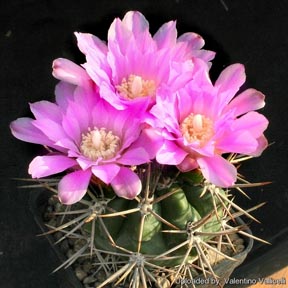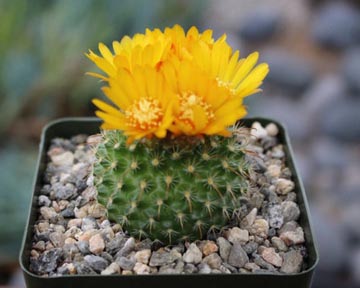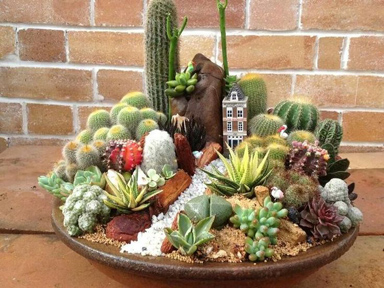The Perfect Cactus Garden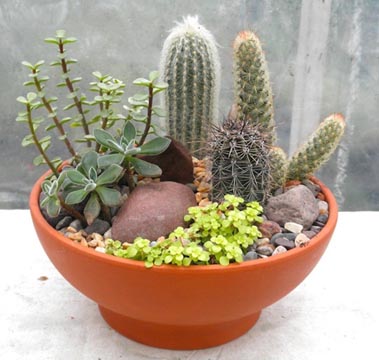 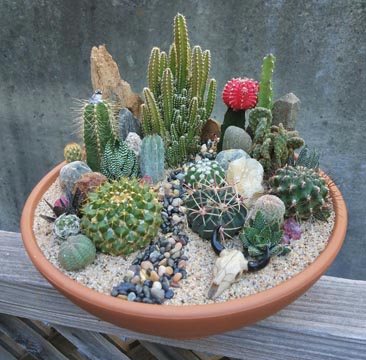 Whether you want to create an indoor or outdoor cactus garden, this guide to help you start your cactus garden journey as fast and easy as possible Cactus Gardens are great to create because they require such little maintenance. Cacti can thrive in many different growing conditions, making them wonderful plants, especially for those of us who have a hard time caring for plants. Cactus gardens, in particular, are so much fun to care for because there are many different ways to create them. Picking Out Your CactiBefore you start putting together your cactus garden, you need to make several decisions. The first and maybe most important decision you should make is what kind of cacti to include in your cactus garden. Common varities used in Cactus Gardens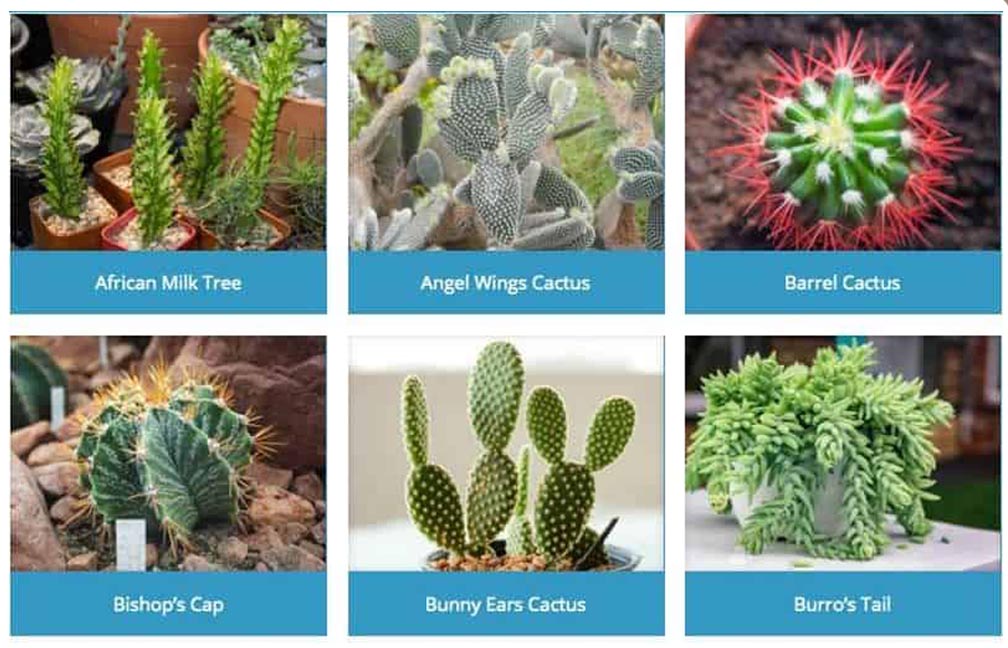
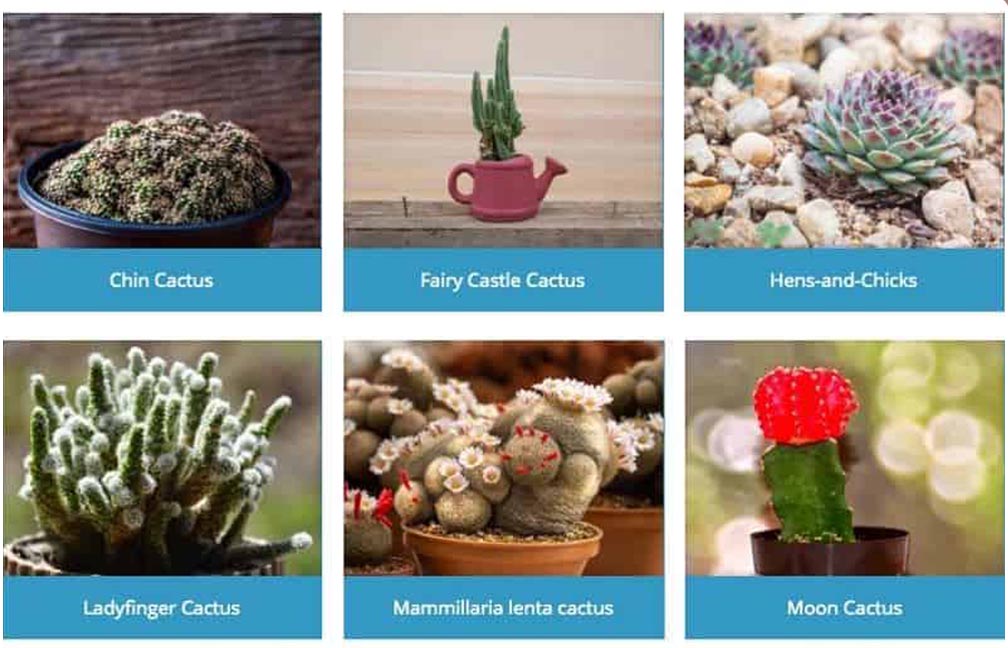
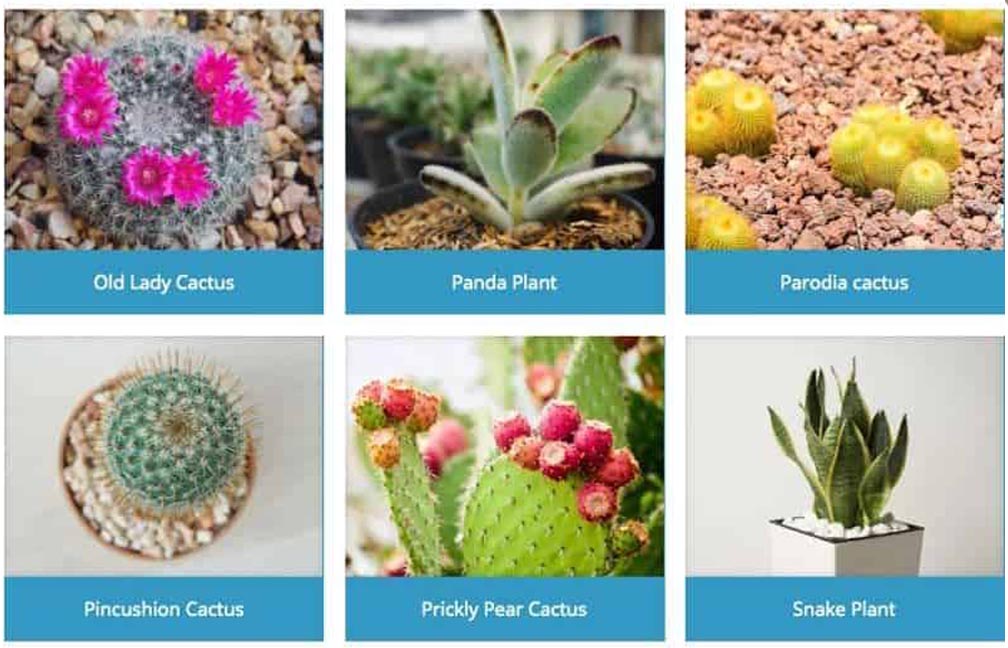
Indoors VS OutdoorsCacti love sunlight and warm weather. Cactus gardens do great outside when you live in a hot and dry environment and have mild winter weather. If you live in a humid area with cold winters, your cactus garden would do much better if you created it indoors in a container. There are thousands of different cacti to choose from when creating your cactus garden. Some of the best plants to include in your indoor cactus garden include:
These are just a few ideas of great indoor cacti to get you started. Cactus flowersOne thing to think about when researching which cacti you want to put in your cactus garden is whether or not you want blooming cacti. Not all cacti bloom, but there are a few that do, such as Mammillaria, Gymnocalycium, and Parodia.
Knowing which, if any, of your cacti bloom is important because it could determine where you place it in your cactus garden layout or it might affect your decorations. Variety is the keyIn fact, you don't have to have only one type of plant in your cactus garden. The best cactus gardens include a variety of cacti and other plants. If you were wondering if you could put a cactus and succulent together, the answer is yes! Cacti and succulents do extremely well when placed together in the same container. Not to mention, cacti are succulents. Even though not all succulents are cacti, all cacti are succulents because succulents are named for their ability to retain moisture. The only thing to keep in mind when choosing different plants for your cactus garden, including mixing cacti and succulents, is to pick plants that are similar in size and care requirements. Plants that need the same amount of light and the same amount of water, especially if you are putting them in the same container. Choosing plants with different care requirements for the same container would make it extremely hard to care for each plant individually and would eventually lead to over or under watering or other damaging issues. Location of cactus gardenAfter you know what kind of cacti you will be putting in your cactus garden, you will need to choose a location for it. Every cactus has different care requirements and the perfect location will depend on the type of cacti you will be using, especially if you are choosing between an indoor and outdoor cactus garden. 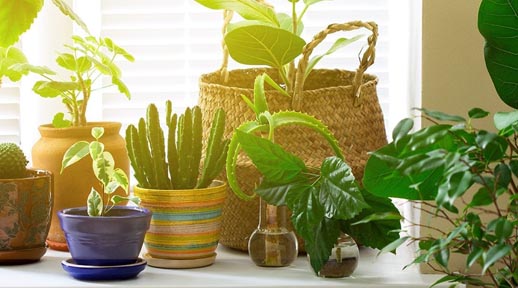 A south or east-facing window will be the best choice for your cactus. If you are planting a cactus garden in a container indoors, you should put it in a sunny window that gets lots of direct sunlight. Most likely, a south or east-facing window will be your best bet. In either location, your cactus garden should get at least 6 hours of direct sunlight a day. The location of your indoor cactus garden also depends on what kind of container you choose and how you choose to display it. Creating an indoor cactus garden is full of possibilities. You could have a hanging cactus garden, one in one large container, one in many different containers, or even one in a terrarium. Each kind of container has different location requirements, so make sure to choose one that works best in the sunniest area of your home. A Container For Your CactiAs previously mentioned, there are many different kinds of containers you can use to create your indoor cactus garden. When choosing a container for your indoor cactus garden, look for one that is shallow and has at least one drain hole.Draining is very important when planting cacti, so make sure to keep that in mind while choosing a container. If the water is unable to drain off from the cactus roots, the cactus will be sitting in water and be more likely to experience root rot. That is omething that could eventually kill the plant. Cactus roots are pretty shallow, so shallow containers work well to ensure that the cactus won't sit in too much water, as well. Different type of containers for a different type of cacti
The type of container you choose also depends on how many cacti you plan on including in your cactus garden. Make sure to choose one large enough to house all of your cacti comfortably. Cacti can be planted right up under each other, but make sure there is enough room for each one to get plenty of sunlight. Terracotta pots are very popular for cactus gardens because of their variety of sizes and great drainage, as well as the fact that it creates a pretty aesthetic look. About The Soil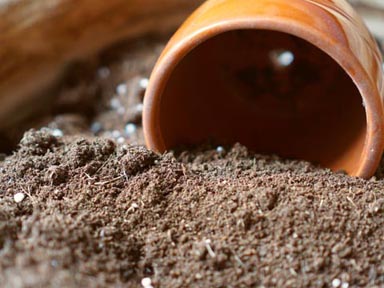
After you have the perfect container and all your plants, it's almost time to plat. But first, you need the proper soil. Cacti require special soil. Regular potting soil is not good for cacti because it holds way too much water. If you plant your cactus in regular potting soil, it will not do well and will possibly die. In fact, without proper drainage, your cacti may begin to experience root rot where the roots are sitting in too much water and rot the plant from the roots up. Root rot is fatal to cacti if it goes on too long without correction. Cactus soil is specially formulated for optimum drainage. You can buy cactus potting soil, or you can prepare the soil for your cactus garden yourself. Cactus potting soil is created with a mixture of one-third regular potting soil, one-third coarse sand, and one-third pumice or perlite. The regular potting soil serves as the base for your cactus potting soil. Coarse sand allows for drainage in soil mix and can be the sand you buy to put in a sandbox. Finally, pumice or perlite are other additives that create good drainage and retain very little moisture. All you have to do is mix all three items together to create your own cactus potting soil. Also, to ensure the best drainage possible, the bottom of the container of your indoor cactus garden with pebbles or gravel before adding the cactus potting soil. Cacti require special soilMaking your own cactus potting soil can actually be much cheaper than buying a store-bought mix. It's also a good idea because it allows you to control the amounts of each item you use. Once you create your first batch of cactus potting soil and start using, you may find that you want to add more or less of one of the ingredients, which is totally fine! The more cacti you plant and take care of, the more you will be able to understand what ratios work best for your cacti. To plant your cactus garden in the ground outdoors, the same principle applies: the soil should have great drainage in order for your cactus garden to thrive. While you don't necessarily need to create a large mix of cactus potting soil, you may need to add some items to the ground soil before planting. To know if you need to alter the ground soil, dig holes for your cacti that are less than a foot deep and fill it with water. Allow 30 minutes to pass and then check it. If water is still standing in the hole, add coarse sand and some rocks to the bottom of the hole before finally planting your cacti. If water is not standing in the hole, you should be good to go. However, if you want to add sand and rocks to the hole anyway just to be sure, it wouldn't hurt the drainage for your cacti at all. Finally Time To PlantOnce your soil is optimized for drainage and your container is filled, it's finally time to plant your cactus garden! Before you start to put your plants in the soil, take a minute to think about how you want to layout your cactus garden. There is no right or wrong way to layout your cactus garden. The only thing to keep in mind is to try not to plant the cacti where some get more light than others. Make sure all of them have access to the direct sunlight. That's the only rule! You can be creative as you want when planting your cactus garden. Create a shape with your cacti or give them a more natural layout and plant them in clusters. You could even create layers, planting some taller than others. It's your garden, so plant them whatever way makes you most happy! When you are ready to finally place your cacti in the soil, dig small holes in the soil, just deep enough for the cacti's roots to fit. Place all of your cacti in their holes before you pack down the soil just in case you want to change the placement of the cacti once you see what it looks like. When you are finally happy with where all the cacti are, pat down the potting mix, give it just a little water, and you are good to go! One issue you may run into when plating your cactus garden is how prickly cacti can be. If you are worried about your hands getting stuck, use thick gloves to avoid getting pricked. Or, you could even use kitchen tongs so you don't have to touch the cacti with your hands at all! Even a folded newspaper will work to help you not prick your hands. If you have trouble getting the cacti out of the containers you bought them in, you can knock on the container a couple of times to knock the roots loose, or use an old, dull knife and scrape around the edges until the cactus comes loose. DecorateNow comes perhaps the most fun part of creating a cactus garden: decorating! Just like with the layout of your cactus garden, there are endless possibilities for decorating it and it is all up to you and your preferences! There are lots of different things you can use to decorate your cactus garden like colored pebbles, small stones, large rocks, figurines, and so much more. Decorations can be as extravagant or simple as you want. When using a cactus garden as decor, many people start with the container. When you choose a container for your cactus garden, choose one that matches the theme of the décor you are looking for. For instance, if you are going for a southwestern themed décor, terracotta pots are the way to go. You can always hand paint and decorate whatever container you have lying around to fit your decor theme! Decorations can be as extravagant or simple as you want. Use large rocks or tall figurines to all more dimensions to your cactus garden. Care For Your GardenNow that you are done creating your cactus garden, all that's left to do is care for it! Sunlight - As mentioned before, your cactus garden needs plenty of sunlight. Check on your cactus garden every day to ensure it is healthy and thriving. If your cacti aren't getting enough sunlight, you will notice their leaves and stems stretching towards the sunlight. You may also notice some discoloration. If you see any of these warning signs, slowly move your cactus garden into more direct sunlight until leaves or stems begin to perk up and colors become more vivid. It is also possible for your cactus garden to get too much sunlight. If this happens, your cacti will lose its green color and potentially become sunburnt with rough and calloused skin. To correct this, simply move your cactus garden out of the sunlight into an area with lower light. When moving your cactus garden, always keep an eye on it after its move to make sure it's still getting enough sunlight. WaterAnother major component of caring for your cactus is water. Cacti don't need a lot of water. In fact, to know when to water your cacti, feel the soil. If it is dry to the touch, go ahead and water it thoroughly. If the soil is wet, your cacti don't need any water.You can tell if your cacti are not getting enough water if its skin or leaves are puckered or shriveled. If your cacti are getting too much water, your cacti will feel mushy and potentially begin to experience root rot. If any damage happens to your cactus garden, it does not mean it is dying. There is always a chance to correct it. Any damage done to leaves due to too much sun, too little sun, too much water, or too little water is permanent. However, you can always prune the damaged leaves or stems away. Fertilize You may decide that you want to fertilize your cactus garden at some point. Cacti are hearty plants that can thrive in almost any condition, so you don't necessarily need to fertilize it. If you choose to fertilize your cactus garden, you may use a fertilizer specific for cacti, like Miracle Grow Cactus Fertilizer. Look for a fertilizer higher in phosphorus than nitrogen. You can fertilize cacti as little as once a year. Or, you can fertilize it 2-3 times a year if you can keep up with a fertilizing schedule. And that's it! cacti are easy plants to take care of. They require very little maintenance and as long as you give it the proper setup, they will thrive for a very long time. If you follow this guide for creating your own cactus garden, you will have a thriving garden up and running in no time! |

